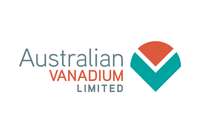When Robert Friedland Talks Vanadium, I Pay Full Attention

“We think there’s a revolution coming in vanadium redox flow batteries,” the mining magnate recently said.
Mr. Robert Friedland is the recipient of the 2017 Northern Miner’s Lifetime Achievement Award, and when the legendary mining billionaire offered his rare insights on vanadium in a recent interview with The Northern Miner, I paid my full attention. Mr. Friedland stated:
“We think there’s a revolution coming in vanadium redox flow batteries,” he says. “You’ll have to get into the mining business and produce ultra-pure vanadium electrolyte for those batteries on a massive scale.
We’re very deeply interested in how you store electrical energy in the grid.
The beauty of the vanadium redox battery is that you can charge and discharge it at the same time, something that can’t be done with a lithium battery. With a vanadium redox flow battery, you can put solar power and wind power into the battery, and you can put excess grid power into the battery at night, and at the same time you can have a stable output into the grid.”
Source: The Northern Miner accessed at –
https://www.northernminer.com/people-in-mining/robert-friedland-celebrating-lifetime-achievement/1003785716/
Like Mr. Friedland, I favor the fundamentals of vanadium, which is embarking on a stealthy run in price that very few exploration and mining investors and commodities observers have yet noticed. Below are charts of vanadium (vanadium pentoxide or V2O5) price and the stock price of two companies active in vanadium, an exploration company and a mining company to illustrate this stealthy run.
The thesis of vanadium bullishness lies in the use of vanadium redox flow batteries ( “VRBs”) to complement the explosive growth of grid-scale wind and solar energy generation capacity, which has increased more than 7-fold in the last 10 years. Large VRBs have characteristics that allow storage of wind and solar-generated electrical power and release of that power during times these generators cannot generate power. VRBs also improve the economics of wind and solar energy generation and enhance grid operation.
Global Wind and Solar Energy Capacity (MW) 2007 to 2016
Source: International Renewable Energy Agency accessed at –
https://www.irena.org/DocumentDownloads/Publications/IRENA_RE_Capacity_Statistics_2017.pdf
The mechanics of renewable power generation is simple. Thanks to science and technology, the average total cost to build and operate a power-generating asset over its lifetime divided by the total energy output of the asset over that lifetime (the “levelized cost”) of wind and solar energy are now the lowest of all commercial energy sources, an unthinkable proposition only a few years ago.
Source: Lazard Asset Management accessed at –
https://www.lazard.com/
The share of wind and solar in electricity production amounts to less than 2.7% globally in 2012 and less than 6% in 2015.
Source: Enerdata accessed at –
https://yearbook.enerdata.net/electricity-domestic-consumption-data-by-region.html#wind-solar-share-electricity-production.html
How high can that 6% share climb? Consider-
“On an unusually windy day in July 10, 2015, Denmark found itself producing 116% of its national electricity needs from wind turbines yesterday evening. By 3am on Friday, when electricity demand dropped, that figure had risen to 140%.
Interconnectors allowed 80% of the power surplus to be shared equally between Germany and Norway, which can store it in hydropower systems for use later. Sweden took the remaining fifth of excess power.
’It shows that a world powered 100% by renewable energy is no fantasy,” said Oliver Joy, a spokesman for trade body the European Wind Energy Association. “Wind energy and renewables can be a solution to decarbonisation – and also security of supply at times of high demand.’”
Source: The Guardian accessed at – https://www.theguardian.com/environment/2015/jul/10/denmark-wind-windfarm-power-exceed-electricity-demand
Additionally, Denmark’s neighbor, Sweden set a 100% renewable energy production target by 2040. The article stated
“Under the proposals, the scope of Sweden’s market-based support scheme of renewable electricity certificates will be extended to help increase income for energy producers in Sweden and Norway. Proposals also include reducing the tax burden on installation costs for offshore wind.”
Source: Wind Power Monthly accessed at – https://www.windpowermonthly.com/article/1420984/sweden-sets-100-renewable-energy-production-target
Even the not-so-sunny or windy Germany managed to generate 29.5% of its electricity in 2016 from renewables.
If solar and wind energy capacity sustains an annual compounded growth rate of 10%, the world would generate about 20% (from the current 6%) of its electricity from those resources by 2030. Such a scenario is entirely plausible, if not too conservative, and we are well on the renewable renaissance path.
An Asian Power Magazine article dated February 17, 2017 and titled “India’s installed capacity for solar parks hiked to 40,000MW” reports:
“50 parks with at least 500MW capacity each will be constructed.
The Cabinet Committee on Economic Affairs has approved an increase in solar park installed capacity target from 20,000 MW to 40,000 MW for projects to be development in solar parks and ultra-mega solar power projects, according to Mercom Capital Group.”
Source: Asian Power Magazine accessed at –
https://asian-power.com/power-utility/news/indias-installed-capacity-solar-parks-hiked-40000mw
That 40,000 MW represents the capacity equivalent of 40 modern nuclear power plants.
Now consider the impact efficient high voltage electrical power transmission would have on solar and wind electrical power generation tied with VRBs and their advantages.
China has the longest 800kV Ultra High Voltage Direct Current Transmission line: 2,192km Hami–Zhengzhou completed in 2014 and 3,400km line Zhundong–Wannan to be completed in 2018 *. The same technology could transmit excess wind power from San Francisco at 6 am to Houston at 8 am (~3100 km), while capturing solar power from Houston at 8 am and transmitting it to a dark cloudy, stifling New York city at 9am (~2600 km) in time for the Wall Street opening.
*Source: Wikipedia accessed at – https://en.wikipedia.org/wiki/Ultra-high-voltage_electricity_transmission_in_China
Indeed, with the capacity of solar and wind energy increasing and enhanced by VRBs and efficient long distance transmission interconnectors, the future capacity and deployment of wind and solar energy is practically limitless and the levelized cost will further decrease. By comparison, nuclear energy production has stagnated since 2000 due to rising construction time and cost. A modern 1,000 MW nuclear reactor plant can take up to 10 years and US$10 billion to build.
Source: International Atomic Energy Agency accessed at – https://www.iaea.org/PRIS/WorldStatistics/WorldTrendinElectricalProduction.aspx
To me, vanadium clearly offers a better upside than uranium.
Besides the inability of simultaneous charge and discharge pointed out by Mr. Friedland, lithium ion-batteries are not ideally suited for grid-level energy storage because they have a short-duration discharge cycle and begin to degrade after a few hundred cycles of fully charging and fully discharging (or 1,000 cycles at most), whereas vanadium batteries are non-flammable and can operate for 10,000 cycles.
This year, I have written three articles about vanadium and vanadium redox flow batteries, which are worth a read:
Vanadium Redox Flow Batteries: The Next Big Wave After Lithium Batteries
https://seekingalpha.com/article/4031425-ride-vanadium-wave-lithium
Renewables with Vanadium Batteries to Reshape $27 billion Off-Grid Energy Market
https://seekingalpha.com/article/4038919-vanadium-batteries-power-27-billion-grid-energy-market
Death of Uranium and Renaissance of Vanadium (in Energy Storage)
https://maucapital.com/death-of-uranium-and-renaissance-of-vanadium-in-energy-storage/
How do investors profit from the upcoming renewable energy renaissance and the pent-up demand for VRBs?
Over half of the VRB cost is vanadium. Vanadium is primarily used as a steel strengthening additive with less than 10% of worldwide vanadium supply used today in batteries. Given that there are no vanadium strategic stockpiles, any increase in vanadium redox flow battery demand will cause an increase in vanadium price.
Unfortunately, there is no vanadium ETF, and vanadium does not trade on commodity exchanges such as the COMEX or LME, which makes buying the various forms of vanadium challenging.
The other option is to own vanadium mines. Vanadium is mostly produced as a by-product from processing titanium iron ore. However, there are a couple of primary vanadium deposits, such as the active Maracas Menchen mine in Brazil, and the feasibility stage Gibellini deposit in Nevada, which Prophecy Development Corp. (TSE: PCY, OTC: PRPCF) had just announced it will acquire.
I am siding with Robert Friedland and believe both vanadium and vanadium mining companies represent excellent value to investors at current prices.
I don’t own vanadium metal; however, I own 19% of Prophecy Development Corp.
By John Lee, CFA
About the author — John Lee, CFA is an accredited investor with over 2 decades of investing experience in metals and mining equities. Mr. Lee joined Prophecy Development Corp. (www.prophecydev.com) in 2009 as the Company’s Chairman. Under John Lee’s leadership, Prophecy raised over $100 million through the Toronto Stock Exchange and acquired a portfolio of silver assets in Bolivia, coal assets in Mongolia, and a Titanium project in Canada. John Lee is a Rice University graduate with degrees in economics and engineering.
Source: www.prophecydev.com

